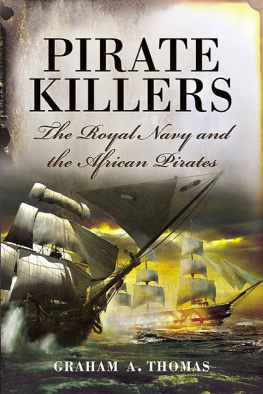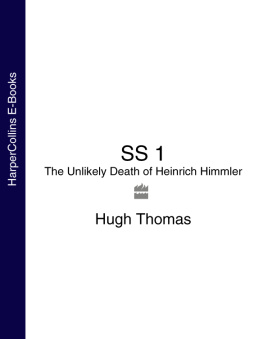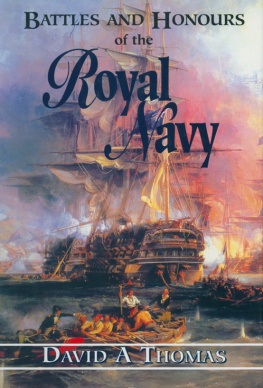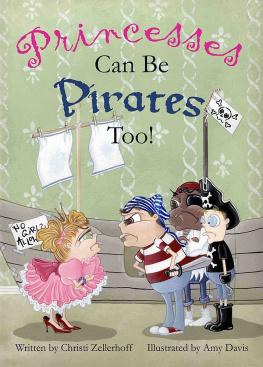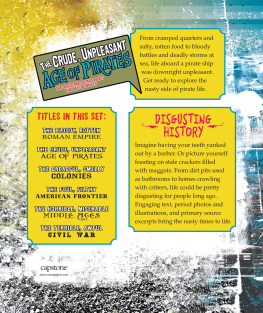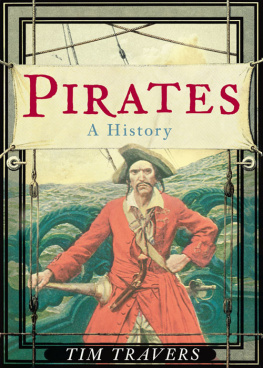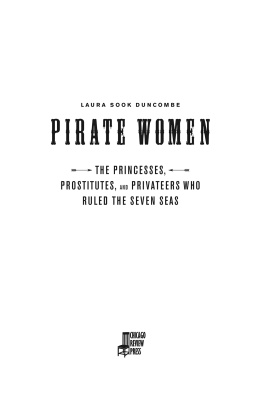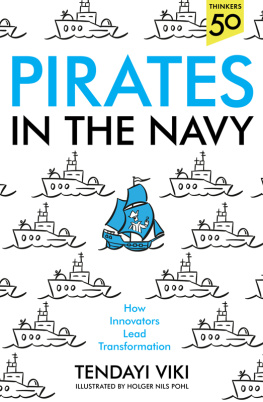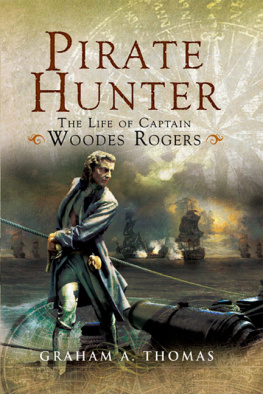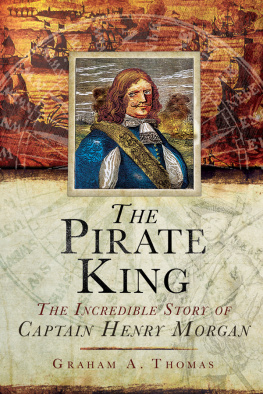
This book is dedicated to all the men and women of the Royal Navy, past, present and future, who have kept Britain safe from piracy on the high seas and ensured that our economy flourished by keeping the sea lanes open. Some have made the supreme sacrifice to keep this nation secure, and others will do in the future. God Bless you all.

First published in Great Britain in 2011 by
Pen & Sword Maritime
an imprint of
Pen & Sword Books Ltd
47 Church Street
Barnsley South Yorkshire
S70 2AS
Copyright Graham A. Thomas 2011
ISBN 978-1-84884-240-3
eISBN 9781844683581
The right of Graham A. Thomas to be identified as Author of this Work has been asserted by him in accordance with the Copyright, Designs and Patents Act 1988.
A CIP catalogue record for this book is available from the British Library.
All rights reserved. No part of this book may be reproduced or transmitted in any form or by any means, electronic or mechanical including photocopying, recording or by any information storage and retrieval system, without permission from the Publisher in writing.
Typeset in 11.5pt Ehrhardt by
Mac Style, Beverley, E. Yorkshire
Printed and bound in the UK by CPI
Pen & Sword Books Ltd incorporates the imprints of Pen & Sword
Aviation, Pen & Sword Maritime, Pen & Sword Military, Wharncliffe Local
History, Pen & Sword Select, Pen & Sword Military Classics, Leo Cooper,
Seaforth Publishing and Frontline Publishing.
For a complete list of Pen & Sword titles please contact
PEN & SWORD BOOKS LIMITED
47 Church Street, Barnsley, South Yorkshire, S70 2AS, England
E-mail: enquiries@pen-and-sword.co.uk
Website: www.pen-and-sword.co.uk
Preface
The idea for this book began when I ran across references to Riff or Reef pirates operating along the Barbary Coast while researching my book, Pirate Hunter , on Captain Woodes Rogers. There didnt appear to be much on the Reef pirates at first until I started digging deeper for this book. In fact, the Reef pirates were part of a much wider picture, the piracy from the Barbary Coast Algeria, Tunisia, Libya and Morocco. To my surprise I discovered that Barbary pirates had been operating from the seventeenth century right up into the nineteenth century when the incidents with the Reef pirates were documented.
What I found so interesting was that the Great Powers had been unable to put down the piracy that attacked the shipping in the Mediterranean. This body of water was and still is a very busy trade route, as all the countries bordering it trade with each other. For the pirates it was lucrative trade. These were not just pirates they were also religious zealots, determined to attack anyone who didnt believe in the Muslin faith this meant the great Christian powers of France, Spain, Portugal, Dutch and, of course, England.
As I researched this book I realized that it was not about piracy as much as about the Royal Navy that dealt with piracy along the African coast, from Bartholomew Roberts to the Reef pirates, from Madagascar to Morocco, the Royal Navy engaged pirates wherever they could. Pirate Killers is about these men of the Royal Navy who over the centuries have done their duty in attacking and putting down piracy. Many have been wounded or lost their lives in their efforts to make the high seas free from lawlessness.
Today the Royal Navy is engaged with pirates in the Caribbean as it battles the drug trade and with pirates from Somalia and other hot spots around the world. However, unlike the navy of today, the Royal Navy in earlier centuries had no qualms about killing pirates. Diplomacy came first but when that failed military might was used and, yes, pirates were killed. That is why this book is called Pirate Killers .
This is the story of the men and women of the Royal Navy who did their duty to the best of their ability to wipe out the scourge of piracy. This is the story of the Royal Navy and the African pirates. In our own day, as piracy from the lawless state of Somalia and other states increases, politicians around the world are going to have to take some difficult decisions. Perhaps they should take a lesson from the Royal Navy.
Graham A Thomas
Warminster, May 2010

The Mediterranean showing the Barbary Coast of North Africa.
Introduction: Danger in the Mediterranean
He looked out across the sea, the sun blazing and reflecting off the water. There was a ship, apparently with very little sail, off his bow some distance away. Antonio Alloy, Commander of the Juan Felicca Mary , paced the deck. His cargo of bale goods and tobacco cleared for Algiers would be lucrative pickings for pirates. He knew there were pirates in this area. Hed heard of the atrocities of the Barbary pirates and wondered now what this unknown ship was up to.
Only two days out from Gibraltar he was near Malaga and only thirty-five miles from shore when this ship had been sighted. He was worried. The unknown vessel looked familiar. He stared through the telescope again and realized that he was looking at a Spanish Guarda Costa and as he went past he saw the Costa raise its sails, turn and give chase. Immediately, Alloy ordered as much sail as possible.
It was 10 October 1834. The wind was blowing them towards the Barbary Coast which was a haven for pirates but he had no choice if he was to get away from the ship chasing them. Hour after hour went by as Commander Alloy did everything he could to keep a distance between the Mary and the Guarda Costa. For thirty-four hours he evaded the pursuing vessel then his heart sank as not more than a mile from the Barbary Coast the wind died and the Mary was becalmed, in sight of the Costa vessel behind him and in sight of the coast. Ordering the Mary s launch to tow the ship away from the coast he watched his men lower the boat into the sea with ropes and tackle. They rowed hard and Commander Alloy saw the slack tighten. Slowly the Mary began to move forward as the men in the launch rowed their hearts out. He heard distant cries from the shore and then saw three Moorish pirate row boats, each apparently containing from forty to forty-five men, rushing from the shore and making towards them. The trap was set.
The Moors shouted and screamed fierce cries as they gained on the Mary . Commander Alloys men rowed for their lives but the three pirate boats gained quickly on the Mary . Shots rang out as they came within range. But luck was on the Mary s side the sails flapped as a breeze sprang up. Immediately, Commander Alloy ordered his crew to steer the Mary so the wind filled its sails and they rapidly pulled away from the pirates. To make their escape they had to cut loose their launch, sealing the fate of the men in it.
Commander Alloy was lucky. The wind kept him and most of his crew from being captured and enslaved for life by the pirates of the Barbary Coast.
This action is just one of many recorded incidents where pirates from the Barbary Coast attacked ships in the busy sea lanes of the Mediterranean. The pirates from this area had no qualms about attacking ships from all nations. They began in the sixteenth century and continued into the middle of the nineteenth century.
Throughout this time it was the navy that asserted Englands strength and influence in the area, punishing the pirates when British ships and subjects were attacked and captured. The navy used diplomacy as England tried to negotiate with the pirates to win back captured British sailors and when that failed it wrought destruction on the pirates. Operating from Gibraltar, the navy did its best to deal with the pirates operating along the Barbary Coast, engaging with them whenever it was necessary.

